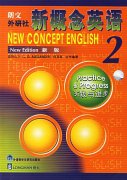牛津实用英语语法:170 see和 hear
编辑:高中作文网A see意指约见(通常用于商业活动)以及会见时可用进行时态:
The director is seeing the applicants this morning.
今天早上主任要见那些求职的人。
I am seeing my solicitor tomorrow.
我明天要见我的律师。
see可以指访问,通常指旅游者而言:
Tom is seeing the town/the sights.
汤姆正在这座城市观光/观光各处景点。
下列词组也可以用进行时态:
see about(= make arrangements/enquiries安排,查询):
We are seeing about a work permit for you.
我们正在给你办理工作执照。(着手安排此事)
see to(=arrange,put right, deal with安排,修理,处理):
The plumber is here. He is seeing to the leak in our tank.
管道工在这里。他正在修理我们的水箱的漏洞。
see somebody out(= escort him/her to the door送他/她到门口)
see somebody home (=escort him/her home送他/她回家)
see somebody to+place(=escort him/her to+place送他/她到某地):
Ann:Is Bill seeing you home after the party?
安:比尔是不是要在晚会结束后送你回家?
Mary:No,he’s just seeing me to my bus.
玛丽:不,他只把我送上公共汽车。
see someone off(=say goodbye to a departing traveller at the starting point of his journey为一个即将离开的旅客在旅程的起点,通常是火车站或机场等处送行):
We’re leaving tomorrow.Bill is seeing us off at the airport.
我们明天就要离开了。比尔要到机场去为我们送行。
B hear 如指正式地听取投诉/证言等时,也可用进行时态:
The court is hearing evidence this afternoon.
法庭今天下午听取证词。
意指听到消息或信件的hear只有在现在完成时及一般将来时中才能用进行时态:
I’ve been hearing all about your accident.
我一直在听人说你出事故的详细情况。
You’ll be hearing about the new scheme at our next meeting.
在我们下一次会议上你就会听到新计划的情况。








